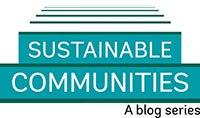The World Bank recently completed a comprehensive study that looks into the specifics of urban development across South Asia, and provides policy recommendations to help countries in the region build more prosperous, livable cities. One of the most innovative features of this
South Asia Urbanization Review is that it relies extensively on geospatial mapping and satellite imagery, especially night-time light data. This approach allowed World Bank experts to overcome the lack of reliable, cohesive urbanization data across South Asian countries, and to measure the footprint of urban settlements in a consistent way. They quickly found out that urban expansion in South Asia remains largely unplanned, and often spreads to areas that are not officially considered urban - prompting them to describe urbanization in the region as "hidden" and "messy". In this video, Peter Ellis provides a more detailed overview of the main findings, and describes how South Asian countries have a unique opportunity to get urbanization right as their cities continue to grow.
[[avp asset="/content/dam/videos/ecrgp/2018/jun-13/sustainable_communities_blog_-_south_asia_urbanization_review_hd.flv"]]/content/dam/videos/ecrgp/2018/jun-13/sustainable_communities_blog_-_south_asia_urbanization_review_hd.flv[[/avp]]
[[avp asset="/content/dam/videos/ecrgp/2018/jun-13/sustainable_communities_blog_-_south_asia_urbanization_review_hd.flv"]]/content/dam/videos/ecrgp/2018/jun-13/sustainable_communities_blog_-_south_asia_urbanization_review_hd.flv[[/avp]]




Join the Conversation